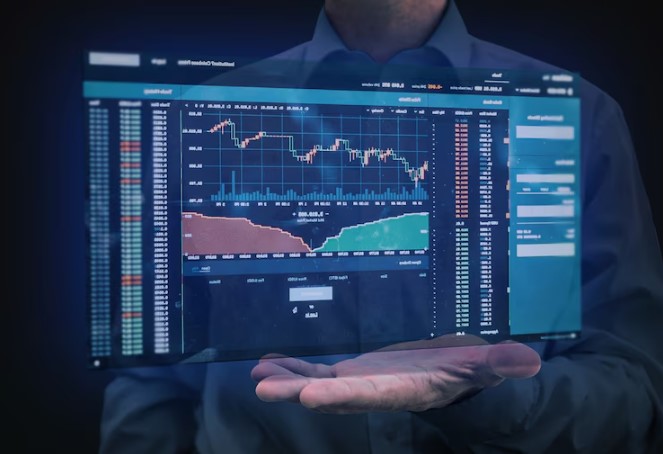Cryptocurrency exchanges have played a pivotal role in the growth and adoption of digital assets, providing platforms for buying, selling, and trading cryptocurrencies. Over the years, these exchanges have evolved significantly, adapting to technological advancements, regulatory changes, market demands, and user preferences. This article explores the evolution of cryptocurrency exchanges, from the early days of centralized exchanges to the rise of decentralized platforms and innovative trading features.
Early Centralized Exchanges
The early days of cryptocurrency exchanges were dominated by centralized platforms that acted as intermediaries for trading digital assets. Key features of early centralized exchanges include:
1.
Basic Trading Functionality: Early exchanges offered basic trading functionality, allowing users to buy and sell cryptocurrencies using fiat currencies or other digital assets.
2.
Limited Asset Listings: Initial exchanges had limited asset listings, primarily focusing on major cryptocurrencies like Bitcoin and Ethereum.
3.
Centralized Control: Centralized exchanges operated with centralized control, managing user funds, order matching, and trade execution on their platforms.
4.
Security Challenges: Centralized exchanges faced security challenges, including hacking incidents, thefts, and vulnerabilities in their systems.
Transition to Decentralized Exchanges (DEXs)
The evolution of cryptocurrency exchanges led to the emergence of decentralized exchanges (DEXs), offering a decentralized and non-custodial approach to trading digital assets. Key features of DEXs include:
1.
Peer-to-Peer Trading: DEXs enable peer-to-peer trading directly between users without the need for intermediaries or central control.
2.
Non-Custodial Wallets: Users retain control of their private keys and funds with non-custodial wallets, enhancing security and reducing counterparty risks.
3.
Smart Contract Technology: DEXs leverage smart contract technology on blockchain platforms like Ethereum to automate trade settlements, custody, and order execution.
4.
Asset Diversity: DEXs support a wider range of digital assets, including tokens issued on blockchain platforms through Initial Coin Offerings (ICOs) and token sales.
Hybrid Exchanges and Advanced Trading Features
Hybrid exchanges combine features of centralized and decentralized platforms, offering a balance of security, liquidity, and user control. Key aspects of hybrid exchanges include:
1.
Hybrid Architecture: Hybrid exchanges integrate centralized order matching engines with decentralized settlement layers, providing a seamless trading experience.
2.
Advanced Trading Tools: Hybrid exchanges offer advanced trading tools and features, including margin trading, derivatives, futures contracts, and algorithmic trading.
3.
Liquidity Aggregation: Some hybrid exchanges use liquidity aggregation techniques to access liquidity from multiple sources, including centralized and decentralized markets.
4.
Regulatory Compliance: Hybrid exchanges prioritize regulatory compliance, implementing Know Your Customer (KYC) procedures, Anti-Money Laundering (AML) policies, and security measures.
Innovative Trading Models and Technologies
The evolution of cryptocurrency exchanges has introduced innovative trading models, technologies, and concepts that enhance market efficiency, liquidity, and accessibility. Examples include:
1.
Decentralized Finance (DeFi) Exchanges: DeFi exchanges leverage blockchain technology, smart contracts, and decentralized protocols to offer permissionless and automated trading of financial assets, including cryptocurrencies, tokens, and synthetic assets.
2.
Automated Market Makers (AMMs): AMMs use algorithmic pricing mechanisms and liquidity pools to enable continuous and decentralized trading, powering DeFi platforms like Uniswap, SushiSwap, and Curve Finance.
3.
Cross-Chain Compatibility: Exchanges are exploring cross-chain compatibility and interoperability to facilitate asset transfers and trading across multiple blockchain networks, such as Ethereum, Binance Smart Chain, Polkadot, and Cosmos.
4.
Layer 2 Solutions: Layer 2 solutions, including sidechains and scaling solutions like the Lightning Network and Optimistic Rollups, aim to improve scalability, transaction speeds, and cost-efficiency for cryptocurrency exchanges.
Regulatory Compliance and Security Measures
As cryptocurrency exchanges evolve, regulatory compliance and security measures become paramount to ensure trust, transparency, and user protection. Key aspects include:
1.
Regulatory Frameworks: Exchanges adhere to regulatory frameworks and compliance requirements in their jurisdictions, including licensing, reporting, and anti-fraud measures.
2.
Security Enhancements: Exchanges invest in robust security infrastructure, multi-factor authentication, cold storage solutions, and cybersecurity protocols to safeguard user funds and data.
3.
Risk Management: Exchanges implement risk management strategies, insurance coverage, and contingency plans to mitigate risks associated with hacking, thefts, and operational disruptions.
4.
Transparency and Disclosure: Exchanges promote transparency and disclosure of information, including audit reports, asset reserves, trading volumes, and fees, to enhance market integrity and investor confidence.
Future Trends and Challenges
The future of cryptocurrency exchanges is shaped by ongoing trends, challenges, and innovations that drive market evolution. Key trends and challenges include:
1.
Regulatory Clarity: Continued regulatory clarity, global coordination, and industry standards are essential for the sustainable growth of cryptocurrency exchanges and investor protection.
2.
Institutional Adoption: Increased institutional participation, investment, and integration of cryptocurrencies into traditional financial systems contribute to market maturity and liquidity.
3.
User Experience: Exchanges focus on improving user experience, interface design, mobile accessibility, customer support, and educational resources to attract and retain users.
4.
Decentralization and Governance: Decentralized governance models, community participation, and DAOs (Decentralized Autonomous Organizations) shape the governance structures of future exchanges.
5.
Scalability and Efficiency: Scalability solutions, interoperability protocols, and layer 2 technologies address scalability challenges and enhance the efficiency of cryptocurrency exchanges.
Conclusion
The evolution of cryptocurrency exchanges reflects the dynamic nature of the digital asset ecosystem, driven by technological innovation, regulatory developments, market demands, and user preferences. From centralized platforms to decentralized protocols, hybrid models, and advanced trading features, exchanges continue to evolve to meet the evolving needs of traders, investors, and stakeholders. Regulatory compliance, security measures, transparency, and user experience are key factors shaping the future of cryptocurrency exchanges. By embracing innovation, adopting best practices, and addressing challenges, exchanges contribute to the growth, adoption, and maturation of the cryptocurrency market.
Cryptocurrency exchanges have played a pivotal role in the growth and adoption of digital assets, providing platforms for buying, selling, and trading cryptocurrencies. Over the years, these exchanges have evolved significantly, adapting to technological advancements, regulatory changes, market demands, and user preferences. This article explores the evolution of cryptocurrency exchanges, from the early days of centralized exchanges to the rise of decentralized platforms and innovative trading features.
Early Centralized Exchanges
The early days of cryptocurrency exchanges were dominated by centralized platforms that acted as intermediaries for trading digital assets. Key features of early centralized exchanges include:
1.
Basic Trading Functionality: Early exchanges offered basic trading functionality, allowing users to buy and sell cryptocurrencies using fiat currencies or other digital assets.
2.
Limited Asset Listings: Initial exchanges had limited asset listings, primarily focusing on major cryptocurrencies like Bitcoin and Ethereum.
3.
Centralized Control: Centralized exchanges operated with centralized control, managing user funds, order matching, and trade execution on their platforms.
4.
Security Challenges: Centralized exchanges faced security challenges, including hacking incidents, thefts, and vulnerabilities in their systems.
Transition to Decentralized Exchanges (DEXs)
The evolution of cryptocurrency exchanges led to the emergence of decentralized exchanges (DEXs), offering a decentralized and non-custodial approach to trading digital assets. Key features of DEXs include:
1.
Peer-to-Peer Trading: DEXs enable peer-to-peer trading directly between users without the need for intermediaries or central control.
2.
Non-Custodial Wallets: Users retain control of their private keys and funds with non-custodial wallets, enhancing security and reducing counterparty risks.
3.
Smart Contract Technology: DEXs leverage smart contract technology on blockchain platforms like Ethereum to automate trade settlements, custody, and order execution.
4.
Asset Diversity: DEXs support a wider range of digital assets, including tokens issued on blockchain platforms through Initial Coin Offerings (ICOs) and token sales.
Hybrid Exchanges and Advanced Trading Features
Hybrid exchanges combine features of centralized and decentralized platforms, offering a balance of security, liquidity, and user control. Key aspects of hybrid exchanges include:
1.
Hybrid Architecture: Hybrid exchanges integrate centralized order matching engines with decentralized settlement layers, providing a seamless trading experience.
2.
Advanced Trading Tools: Hybrid exchanges offer advanced trading tools and features, including margin trading, derivatives, futures contracts, and algorithmic trading.
3.
Liquidity Aggregation: Some hybrid exchanges use liquidity aggregation techniques to access liquidity from multiple sources, including centralized and decentralized markets.
4.
Regulatory Compliance: Hybrid exchanges prioritize regulatory compliance, implementing Know Your Customer (KYC) procedures, Anti-Money Laundering (AML) policies, and security measures.
Innovative Trading Models and Technologies
The evolution of cryptocurrency exchanges has introduced innovative trading models, technologies, and concepts that enhance market efficiency, liquidity, and accessibility. Examples include:
1.
Decentralized Finance (DeFi) Exchanges: DeFi exchanges leverage blockchain technology, smart contracts, and decentralized protocols to offer permissionless and automated trading of financial assets, including cryptocurrencies, tokens, and synthetic assets.
2.
Automated Market Makers (AMMs): AMMs use algorithmic pricing mechanisms and liquidity pools to enable continuous and decentralized trading, powering DeFi platforms like Uniswap, SushiSwap, and Curve Finance.
3.
Cross-Chain Compatibility: Exchanges are exploring cross-chain compatibility and interoperability to facilitate asset transfers and trading across multiple blockchain networks, such as Ethereum, Binance Smart Chain, Polkadot, and Cosmos.
4.
Layer 2 Solutions: Layer 2 solutions, including sidechains and scaling solutions like the Lightning Network and Optimistic Rollups, aim to improve scalability, transaction speeds, and cost-efficiency for cryptocurrency exchanges.
Regulatory Compliance and Security Measures
As cryptocurrency exchanges evolve, regulatory compliance and security measures become paramount to ensure trust, transparency, and user protection. Key aspects include:
1.
Regulatory Frameworks: Exchanges adhere to regulatory frameworks and compliance requirements in their jurisdictions, including licensing, reporting, and anti-fraud measures.
2.
Security Enhancements: Exchanges invest in robust security infrastructure, multi-factor authentication, cold storage solutions, and cybersecurity protocols to safeguard user funds and data.
3.
Risk Management: Exchanges implement risk management strategies, insurance coverage, and contingency plans to mitigate risks associated with hacking, thefts, and operational disruptions.
4.
Transparency and Disclosure: Exchanges promote transparency and disclosure of information, including audit reports, asset reserves, trading volumes, and fees, to enhance market integrity and investor confidence.
Future Trends and Challenges
The future of cryptocurrency exchanges is shaped by ongoing trends, challenges, and innovations that drive market evolution. Key trends and challenges include:
1.
Regulatory Clarity: Continued regulatory clarity, global coordination, and industry standards are essential for the sustainable growth of cryptocurrency exchanges and investor protection.
2.
Institutional Adoption: Increased institutional participation, investment, and integration of cryptocurrencies into traditional financial systems contribute to market maturity and liquidity.
3.
User Experience: Exchanges focus on improving user experience, interface design, mobile accessibility, customer support, and educational resources to attract and retain users.
4.
Decentralization and Governance: Decentralized governance models, community participation, and DAOs (Decentralized Autonomous Organizations) shape the governance structures of future exchanges.
5.
Scalability and Efficiency: Scalability solutions, interoperability protocols, and layer 2 technologies address scalability challenges and enhance the efficiency of cryptocurrency exchanges.
Conclusion
The evolution of cryptocurrency exchanges reflects the dynamic nature of the digital asset ecosystem, driven by technological innovation, regulatory developments, market demands, and user preferences. From centralized platforms to decentralized protocols, hybrid models, and advanced trading features, exchanges continue to evolve to meet the evolving needs of traders, investors, and stakeholders. Regulatory compliance, security measures, transparency, and user experience are key factors shaping the future of cryptocurrency exchanges. By embracing innovation, adopting best practices, and addressing challenges, exchanges contribute to the growth, adoption, and maturation of the cryptocurrency market.

